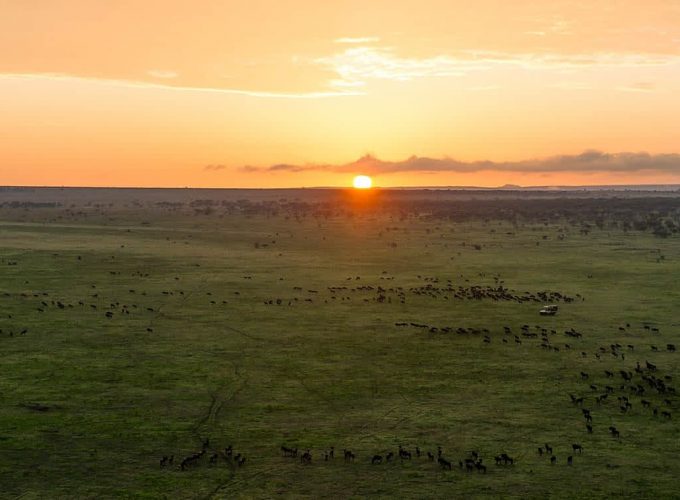Tarangire National Park is one of Tanzania’s best-kept secrets. It is a fantastic area with few visitors (compared to the other national parks on the northern circuit), yet the wildlife is incredible. Both in diversity and the number of animals in the park.
On top of the incredible wildlife viewing, including birds, you also have the option of going on a night safari drive in Tarangire National Park (this is only allowed in two national parks in Tanzania), as well as being allowed to leave your safari vehicle behind and put on your walking boots. This makes it a strong contender for the title of the best national park in Tanzania for going on a safari. Make sure you add this to your list of places for your next Tanzanian holiday.
About Tarangire National Park
Tarangire National Park was created in 1970 and is the sixth-largest park in Tanzania. It takes its name from the large Tarangire River that dissects the park in two, almost vertically. Tarangire means ‘River of warthogs’ as the native people of the area used to hunt warthogs along the river.
Tarangire National Park is situated in the Manyara region of Tanzania, 118 km to the west of Arusha, and is 2850 square kilometers in size.
Main Attractions
Tarangire National Park with its typical African scenes is a great place to go on safari. Its main attractions are:
- The enormous herds of elephants
- The thrill of going on a night safari
- The gigantic baobab trees dotted around the landscape
- Incredibly diverse wildlife
- Going on a walking safari
- One of Tanzania’s best bird watching destinations
Large herds of elephants in Tarangire National Park
Huge families of elephants are what make Tarangire such a delight. Watching these majestic animals is fascinating. Little ones learning how to use their trunks, always guided and protected by their mothers, sisters, and aunties, young bulls wrestling, matriarchs expertly spraying themselves with mud, solitary big bulls ambling through the vegetation. People often end up watching for hours. Indeed, an elephant never forgets, and you will not forget Tarangire National Park’s enchanting ellies.
Going out in the dark for a night safari drive in Tarangire National Park
Night drives are an incredible chance to see what hides amongst the shadows. Tarangire is one of only 2 national parks where it is possible to go on a night safari. See what goes on after dark when aardvarks, owls, honey badgers, civets, bushbabies, and porcupines come out to play.
Beautiful Baobab trees in Tarangire National Park
Tarangire National Park is the land of giants. Heaving with huge baobab trees, these massive towering sentinels loom over the park’s animals. The thousands of termite mounds also add character to the scenery, as old abandoned mounds become new playgrounds for mongoose and birds. Tarangire National Park certainly provides you with some spectacular African scenery to enjoy.
Excellent safaris in Tarangire National Park
Attracted by the fresh waters of the Tarangire River during the dry season, this is where all the action is. Thirsty creatures love to hang out at this refreshing watering hole. It’s the sheer concentration of animals big and small that ensure every game drive is incredibly rewarding. And as one of the hidden gems on the northern safari circuit, the lack of masses of tourists makes the drives even more pleasant!
Doing a walking safari in Tarangire National Park
Walking safaris bring you back to nature, you are more aware of your surroundings and everything becomes exciting. Seeing animals without the physical barrier of a car around you is a different experience and one well worth the effort. In Tarangire National Park you can spend a few hours exploring on foot, or even several days out in the bush. One to add to the bucket list.
Superb bird watching destination
With around 500 bird species recorded in Tarangire National Park, it is one of Tanzania’s best birding destinations. In the swamp area, you can find the largest number of breeding species in one habitat anywhere in the world. It is a true mecca for all bird lovers. The migratory birds are around from November to April.

